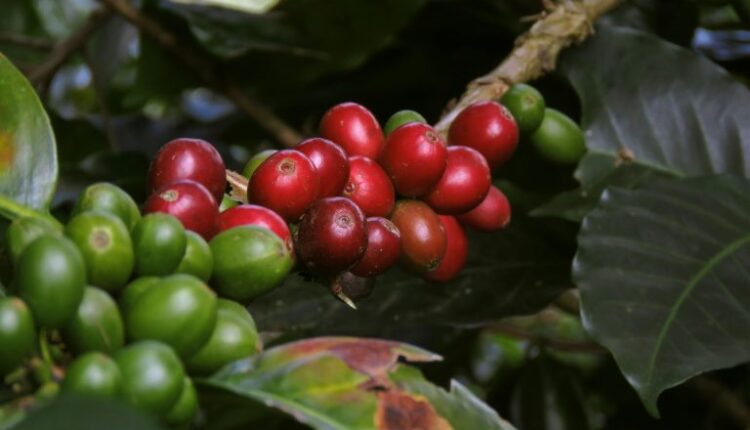New Study Could Provide Better Ability To Detect And Protect Against Pests And Diseases In Coffee Plants – CoffeeTalk
Coffee is a major agricultural commodity, and its production is vigorous in many countries. However, coffee plantations are defenseless to various diseases that can significantly reduce coffee yield, such as the coffee berry border (CBB) beetle (Hypothenemus hampei). Research was conducted in Mercara Gold Estate, near Coorg, Karnataka, India, focusing on pest and disease management, methods of pest infestation detection, and the most prevalent pests impacting coffee plants. Disease management, such as fungicides and insecticides, can be effective, but overuse can lead to resistance to pathogens and harm the environment. Resistant coffee varieties with genetic resistance to specific diseases are a more sustainable approach. Biological control, such as pruning, removing fallen plant material, and maintaining good soil health, can help reduce disease pressure. Vision GNNs, or vision graph neural networks, are a new approach to disease prediction that combines the strengths of computer vision and graph neural networks (GNNs).
Valencia-Mosquera et al. have developed a unique dataset on coffee pests, gathered from Cauca coffee farmers in Colombia. The dataset captures weekly observations on weather, farming activities, and pest presence, offering valuable insights for developing strategies to protect coffee crops. The researchers believe this is the first dataset of its kind to leverage ancestral knowledge for pest detection in coffee. The study also highlights the importance of using technology for surveillance and monitoring, particularly with remote sensing tools like satellite imagery, for early detection and quicker response to outbreaks. The research aims to predict coffee plantation pest disease using Vision GNN, addressing the limitations of existing techniques for predicting coffee plant disease. Data preprocessing and augmentation techniques are crucial for training a proficient HV-GNN model for timely identification of coffee crop killers. Convolutional Neural Networks (CNNs) are used for feature extraction, generating a feature map based on the input image.
The latest vision transformer transforms images into patches, generating a sequence of smaller patches. The proposed graph structure represents individual pixels, patches, or entire regions of interest. Graph Neural Networks (GNNs) engage in iterative updates of features through message transfer, learning edge weights during training. This allows the model to automatically determine which node connections are most informative for disease prediction. A multi-layer hybrid network architecture (HV-GNN) predicts coffee plant diseases using isotropic and pyramid methods. The network architecture consists of multiple GNN layers, with each layer potentially having a different architecture. The proposed methodology has shown greater efficacy in promptly identifying coffee crop pathogens compared to conventional techniques. The effectiveness of the HV-GNN model may be due to its capacity to efficiently combine visual and spectral data, capturing both spatial and spectral patterns related to agricultural pest infestations.
The study focuses on the use of a high-resolution digital camera to capture detailed photographs of coffee plant disease at various stages. 2850 datasets were collected from a coffee plantation in Mercara Gold Estate, Karnataka, during the blooming and early fruit development phases. The model was evaluated using True Positive, True Negative, False Positive, and False Negative metrics. The proposed approach incorporates Convolutional Neural Networks (CNNs) and Graph Neural Networks (GNNs) to detect pests. The performance evaluation using HV-GNN was conducted using Python for statistical analysis, data visualization, and calculation of assessment metrics like precision and recall. The F1 Score, a harmonic mean between precision and recall, provides a balance between the two metrics, ensuring the model achieves a good balance between correctly identifying pests and minimizing false alarms.
The HV-GNN model is an amalgamation of Convolutional Neural Network (CNN) and Graph Neural Network (GNN) that extracts features from images. Iterative training is used to assess the model’s performance using loss and accuracy metrics. The model’s accuracy is measured by the percentage of images it correctly classifies. The model’s accuracy is compared with other deep models, such as CNN, SVM, RF, VGG16, and HV-GNN. The model’s True Positive Rate (TPR) indicates the percentage of disease instances the model correctly recognizes. A high TPR and low FNR model should identify most disease occurrences while decreasing false alarms on healthy samples. The hybrid ViG model uses color and texture for selecting shallow-layer neighbor nodes, gradually linking nodes by content and semantic representation to improve object recognition.
The Hybrid Vision Graph Neural Network (HV-GNN) system combines convolutional processes for feature extraction with graph processing for relational reasoning, enhancing computational complexity. However, this requires significant GPU resources for training and complicates deployment on resource-limited edge devices. The model’s ability to generalize to unfamiliar pest species, environmental circumstances, or severe fluctuations may be constrained. The system aims to improve pest identification in coffee plantations by analyzing images to detect potential problems, such as odd leaf or insect damage. This method can help reduce crop losses and increase revenue, while supporting environmentally friendly agricultural techniques. To enhance HV-GNN’s robustness, it could be enhanced by integrating domain adaption approaches, generative adversarial networks, and expanding the dataset to include varied environmental conditions, illumination fluctuations, and multi-spectral picture inputs. Moreover, graph scarification methods, model pruning, knowledge distillation, and mixed-precision quantization can reduce inference latency and improve model transparency. The HV-GNN’s performance shows potential for real-time pest monitoring in precision agriculture.
Read More @ Nature
Source: Coffee Talk



